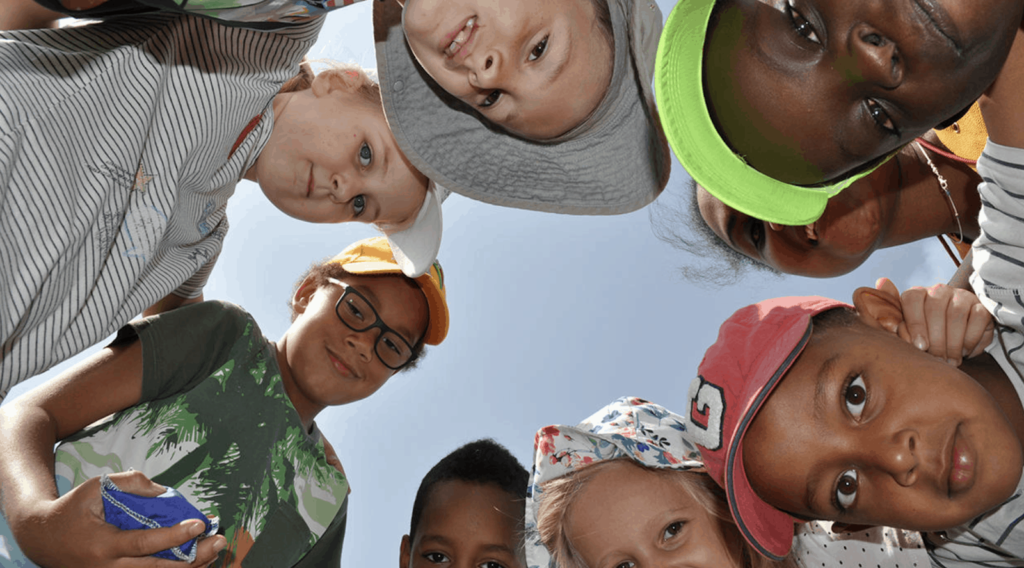Personalize Learning and Build Agency By Using the 4 PLC Questions

“What matters most is providing students with learning environments that foster high levels of learning and engagement for all students. By bringing students into the PLC conversation, we can truly give students the ability to take concrete and measurable steps to increase their learning.” — Personalized Learning in a PLC at Work
Tim Stuart is a big fan of professional learning communities (PLC). As a teacher leader, he’s used them to improve schools in New Mexico, Jakarta, Singapore and Ethiopia.
Popularized by Rick DuFour, the four critical questions of a PLC include:
- What do we want all students to know and be able to do?
- How will we know if they learn it?
- How will we respond when some students do not learn?
- How will we extend the learning for students who are already proficient?
While leading innovation at the Singapore American School (see case study), Stuart had the chance to visit more than 100 of the best schools in the world. The schools that had excellent outcomes and progressive design shared three characteristics:
- They all have characteristics of high functioning PLC (even if they don’t use that term)
- They focus on essential disciplinary knowledge: incorporate transdisciplinary, future-ready skills; and cultivate student-agency behaviors.
- They teach students how to personalize their learning process.
Along the way, he had a hunch. What if PLC could move beyond promoting teacher effectiveness and engage students in the process? What if students owned their own learning and asked themselves the four questions? The PLC 2.0 questions include:
- What do I want to know, understand, and be able to do?
- How will I demonstrate that I have learned it?
- What will I do when I’m not learning?
- What will I do when I have already learned it?
Along the journey, Stuart connected with international educator Sascha Heckmann (head of school in Mozambique) and Response to Intervention (RTI) experts Mike Mattos and Austin Buffum. The four of them found that by asking students to engage in the PLC process, it boosts student agency and invites co-construction of personalized journeys.
Combining the two-way power of PLCs and the proven benefits of RTI, the four education leaders outlined a proven pathway to transformation in their new book, Personalized Learning in a PLC at Work: Student Agency Through the Four Critical Questions.
The practical guide, published by Solution Tree, includes a magic chart that shows how the key concepts come together combining personalized learning and a focus on essential skills.
The authors identified three organizational shift schools must make:
- From traditional classrooms to learning hubs with access to collaborating teachers, tools and resources;
- From lockstep curriculum to personalized pathways so students can co-construct learning journeys; and
- From a set pace to personalized progressions through cycles of inquiry.
The book profiles the journey of Singapore American School, NuVu (Boston), Hobsonville Point and Stonefields School (New Zealand), Futures Academy (Beijing), and i-LEARN (Ecuador).
As head of school in Addis Ababa, Ethiopia, Stuart and his new colleagues have used PLC to to make learning more personalized. The last five weeks of the next school will be used for personalized learning time. A teacher team with some release time is visiting schools and developing plans. The goal is to not only be the best school in Africa but to be the best school with Africa.
For more, see:
- Find a Way to Yes: 9 Leadership Lessons from Pam Moran
- How a California Farming Community is Leading the Global Shift to Competency
Stay in-the-know with all things EdTech and innovations in learning by signing up to receive the weekly Smart Update. This post includes mentions of a Getting Smart partner. For a full list of partners, affiliate organizations and all other disclosures, please see our Partner page.








0 Comments
Leave a Comment
Your email address will not be published. All fields are required.